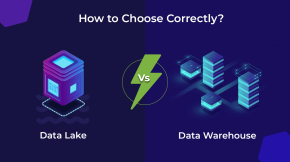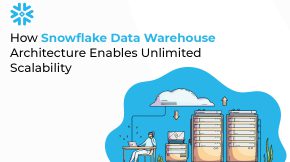How to Build a Better Data Governance Strategy- A Detailed Guide
Data problems getting you down? Lots of businesses can’t really use all the data they have. If you don’t manage your data, it can cause issues. Bad choices, compliance problems, and wasted money can happen. A good ‘data governance strategy’ is key if you want to do well today.
What is Data Governance Strategy?
‘What is data governance strategy’? It’s a plan that shows how to manage data in your business. A ‘what is data governance strategy’ is a high-level plan that defines and outlines the goals and direction for data governance within an organization — guiding decision-making and resource allocation.
Why You Need a Data Governance Strategy
Businesses make tons of data all the time. Coming in from hundreds of sources, they need a ‘data governance strategy’ to handle it right. This means valuing, creating, using, and controlling data in a smart way. Without it, you might face these problems:
- Data Confusion: Different teams use data in different ways. This makes things confusing.
- Bad Data: Wrong data leads to mistakes and wasted time.
- No Clear Data: It’s hard to know what data you have, so it’s easy to misuse it.
- Breaking Rules: Messing up data can mean breaking laws.
Data Governance vs Data Strategy: What’s the Difference?
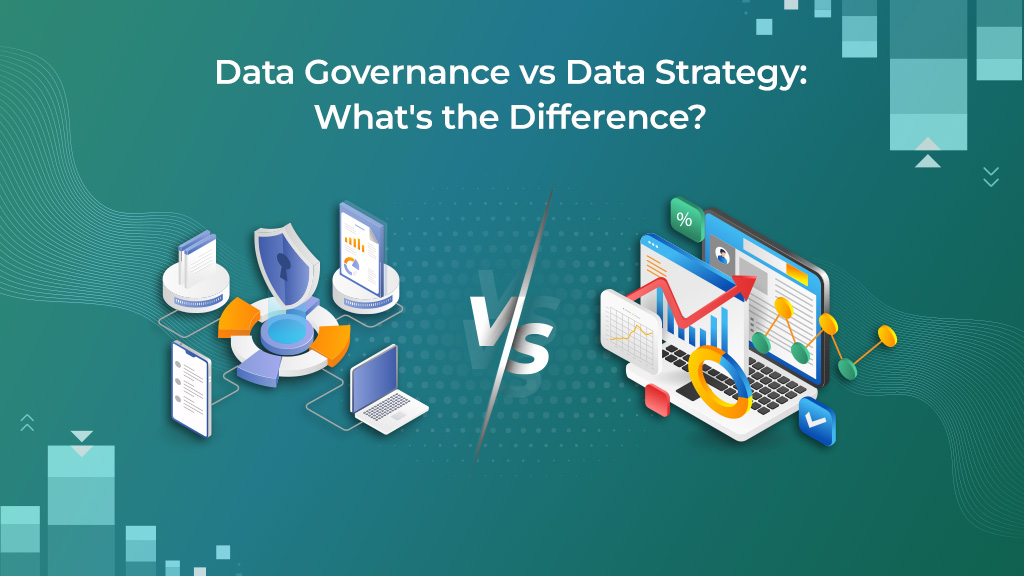 It’s important to know ‘data governance vs data strategy’. A data strategy is about how you’ll use data to meet your goals. It’s about the “what” and “why.” Data governance is about how to manage data well. It’s about the “how” and “who.”
It’s important to know ‘data governance vs data strategy’. A data strategy is about how you’ll use data to meet your goals. It’s about the “what” and “why.” Data governance is about how to manage data well. It’s about the “how” and “who.”
Think of it like this: your data strategy is the map, and your ‘data governance strategy’ is the road rules. A strong ‘data governance strategy’ helps your data strategy work. A data strategy without data governance is a bad idea.
How to Build Your Data Governance Strategy and Roadmap: A Simple Guide
Want a good ‘data governance strategy and roadmap’? Here’s how:
1. Use a Data Governance Framework
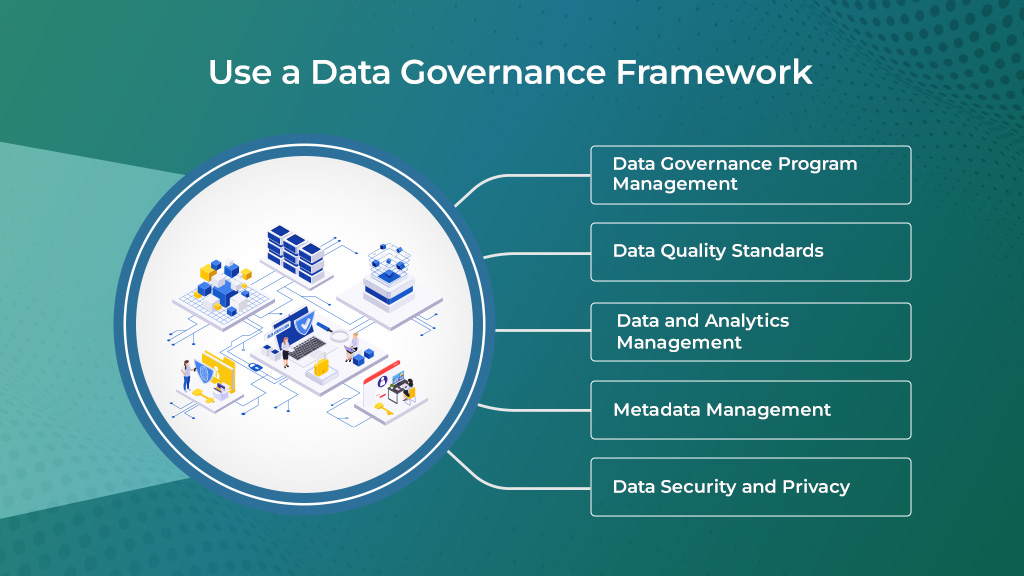 A ‘data governance framework’ helps you set up your strategy. It’s a set of rules for managing your data.
A ‘data governance framework’ helps you set up your strategy. It’s a set of rules for managing your data.
Here’s what a good framework should include:
- Data Governance Program Management: Get a team, set rules, and train people. This helps you put ‘data governance initiatives’ into action. This involves establishing a team, defining processes, policies, and procedures, and providing education to support a data governance program. The elements of program management are what drive successful implementation of ‘data governance initiatives’.
- Data Quality Standards: Make sure your data is correct. Get everyone to agree on the rules. Fix bad data and keep checking on it. This critical aspect of data governance focuses on ensuring the accuracy, consistency, and reliability of data. It includes getting all business stakeholders involved to establish quality rules, implementing programs to track and resolve data quality issues, and monitoring data quality continuously.
- Data and Analytics Management: Stop people from doing crazy things with data. Set rules for using data yourself to avoid problems. This aims to prevent uncontrolled analytics practices and maintain governance over data and analytics activities. This is where you establish guidelines and controls for self-service analytics to ensure proper data usage and avoid “wild west” scenarios.
- Metadata Management: Know what data you have and how it’s used. This helps you track data and control who uses it. This is the understanding and management of data assets, their usage, and associated metadata. This allows you to track and control data assets, identify data lineage, and manage data access and usage within your organization.
- Data Security and Privacy: Follow the rules (like GDPR, CCPA, HIPAA). Keep data safe and manage who can see it. This encompasses regulatory compliance, protection against data breaches, and managing data usage permissions. Address regulations such as GDPR, CCPA, HIPAA, and protect Personally Identifiable Information (PII) while defining appropriate data access and usage policies.
The right framework depends on your business size and needs.
2. Find the Right Level of Data Governance
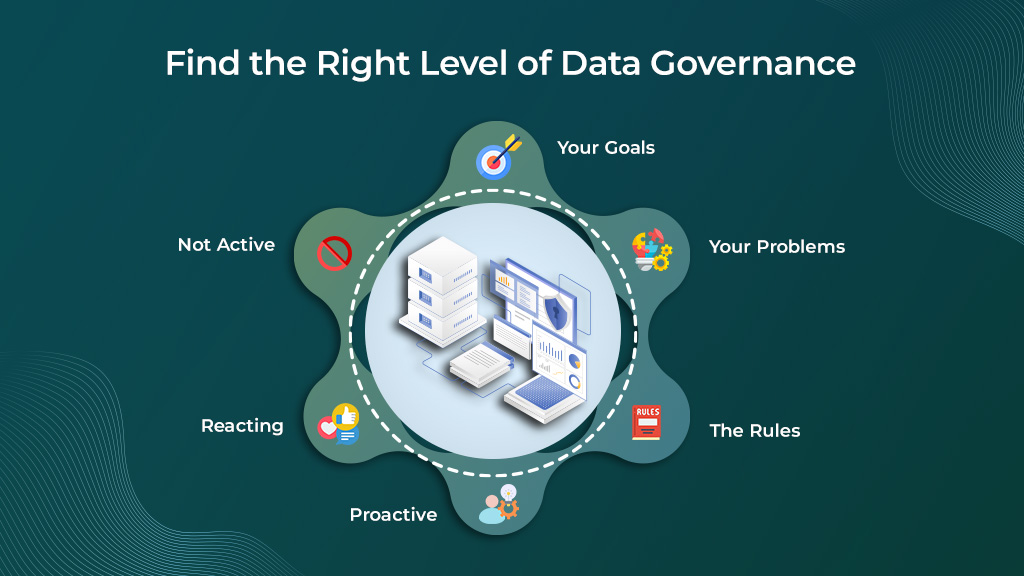 Data governance strategies’ aren’t one-size-fits-all. You need to know where you are now to find the right level. You need to determine the right level of data governance.
Data governance strategies’ aren’t one-size-fits-all. You need to know where you are now to find the right level. You need to determine the right level of data governance.
Most businesses are in one of these groups:
- Not Active: Data governance is all over the place. Organizations with an inactive approach currently have data governance in place, but it is siloed and fails to connect the dots across the business.
- Reacting: You fix problems when they happen. Reactive behaviors are in response to issues stemming from poor data quality or perceived data quality issues. Some organizations are dealing with regulatory or compliance issues and are reacting to an audit or new law/regulation.
- Proactive: You know data governance is important and want to make it work. Proactive responses are efforts from businesses that understand the value of data governance and want to enable it within their organization.
Other things to think about when deciding on an ‘enterprise data governance strategy’:
- Your Goals: How does data governance help you reach your goals? How does data governance drive the success of your overall business objectives?
- Your Problems: What data problems do you have? What challenges are you dealing with as it relates to data governance, and how do they limit your growth?
- The Rules: Some industries have lots of rules to follow; compliance may be urgent.
Pick a data governance program that fits your business.
3. Start Your Data Governance Program
A ‘data governance program’ turns your ‘data governance strategy’ into action. It tells you how to use the rules you set up. A data governance program defines how to implement your ‘data governance strategy’. It provides guidelines to translate the policies, procedures, structures, roles, and responsibilities outlined in the data governance strategy into tangible actions.
Guides to Help You Start
Every business is different. Make a program that fits you. Whether it’s big or small, make sure it’s easy to keep up and meets your needs. Since every organization is unique, developing a tailored program that meets the specific needs of your organization is crucial. Whether it is an enterprise-level data governance program or a more practical and proportional approach, the goal is to create a program that is maintainable and aligned with your organization’s requirements.
Big Data Governance Program
This is for businesses that already have good data practices. This guide is intended for organizations with mature data governance practices in place seeking to enable a full-scale enterprise data governance program. Have executive buy-in, a multi-year budget, and a change management strategy? This one’s for you.
Step-by-Step Data Governance
This is for businesses that want to start slowly. This guide is intended for organizations that want to take an iterative approach to data governance. Use this guide to build out a program that is practical, maintainable, and proportional to your existing business needs.
Tips for a Good Data Governance Program and Strategy
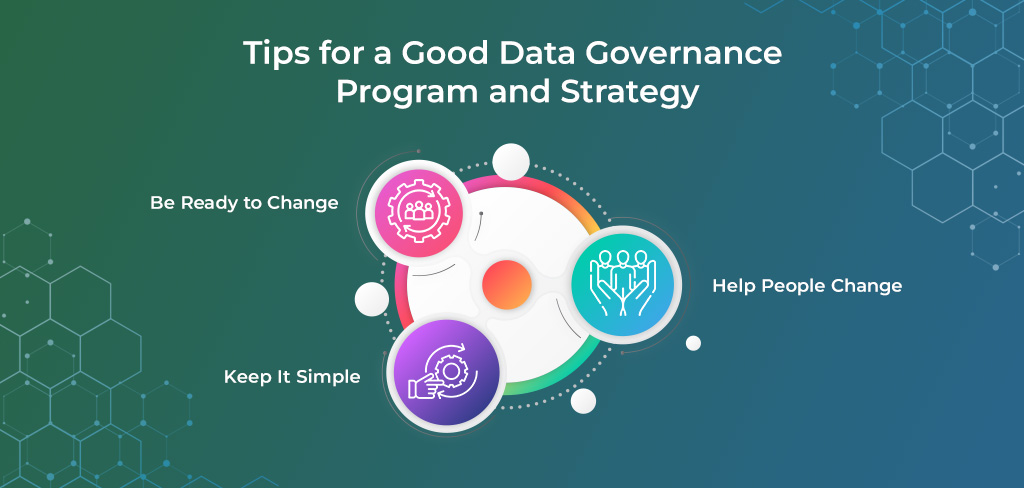 Want your ‘data governance initiatives’ to work well? Keep these tips in mind:
Want your ‘data governance initiatives’ to work well? Keep these tips in mind:
- Be Ready to Change: Data governance never stops. Keep changing your program as your business changes. Data governance is an ongoing journey. Stay open to changing your program. Keep checking and changing your program to meet new needs. Recognize that data governance is an ongoing journey rather than a fixed destination. Stay open to adapting your program as per evolving organizational goals, market dynamics, and data sources. Actively assess and adjust your program to meet changing needs.
- Help People Change: Help people get used to the new program. Show them how it helps the business. Tell them what to do. Train them on data. Celebrate success. Drive user adoption by integrating change management into your program. Connect it with business objectives and ongoing projects. Clearly communicate changes and their impact on business users. Define their roles in the process, provide training on data literacy, and celebrate success, big or small.
- Keep It Simple: Make a clear plan. Make sure everyone knows what to do. Get the right people and processes in place. Develop a clear plan, clearly outlining expectations and objectives. Ensure everyone involved understands and supports the plan. Establishing the right people and processes is crucial for immediate value and long-term success. With this approach, your data governance program will enhance data quality and analytics, benefiting the entire organization.
Following these tips helps your data program work better. By following these tips, you can enhance the effectiveness of your data governance program, leading to improved data quality and analytics, and ultimately aligning your business with its objectives.
How to Implement Data Governance
Implementing ‘how to implement data governance’ means setting goals, getting support, and making a plan. It also means picking the right tools and making data a part of your business.
Data Governance Strategy Document
A ‘data governance strategy document’ is a plan that shows how to manage data. It helps make sure data is good and used well.
Data Governance Strategy Example
A ‘data governance strategy example’ might include saying who owns data, measuring data quality, keeping data safe, and making a data catalog.
Quick Tips for Data Governance
- Start Small: Don’t do everything at once.
- Get Support: Get leaders to support you.
- Work Together: Get IT and business people to work together.
- Check Your Progress: Track how well you’re doing.
- Teach People: Help people learn about data.
Data Governance: The Key Parts
There are three key things to building a good ‘data governance strategy’:
- Use a data governance framework
- Find the right level of data governance
- Make a plan
Steps to make a good ‘data governance strategy’: From picking the right framework to making a plan.
Data Governance and Your Business
When your ‘data governance strategy’ matches your business goals, it helps you use data to make money. When properly aligned with your data strategy and business objectives, a ‘data governance strategy’ can guarantee the alignment of data and analytics initiatives with the objective of driving business value.
When done right, your data strategy will rely heavily on effective data governance because,
- It helps you manage data well. It will provide the necessary framework, processes, and guidelines for managing and ensuring the quality, integrity, confidentiality, and availability of data.
- It sets up who is in charge of data. It will establish accountability, roles, and responsibilities for data management.
- It helps you follow the rules. It will help enforce data standards and policies and facilitate compliance with regulatory requirements.
Is Your Data Strategy Working?
A good ‘data governance strategy’ is the base of any data-smart business. By making a good program, you can turn your data into something useful.
Talk With a Data Expert
Are you ready to get the most out of your data?
Need Help with Data Governance?
‘Data governance strategies’ can be hard. If you need help building a program that fits your business, Beyond Key can help. Our team knows data and can help you reach your goals. We can help you turn your data into something that helps your business. We can help you implement ‘data governance initiatives’.
At Beyond Key, we know about ‘data governance strategies’. We can help you make a plan that fits your business. Our team has worked with many businesses on ‘data governance initiatives’.
We can help you with:
- Checking Your Data: We look at your data practices to see what’s good and bad.
- Making a Strategy: We help you make a ‘data governance strategy’ that fits your goals.
- Setting Up a Framework: We help you set up rules for managing data.
- Managing Data Quality: We help you make sure your data is correct.
- Managing Metadata: We help you manage your data so it’s easy to find.
- Keeping Data Safe: We help you keep your data safe and follow the rules.
- Training People: We train your employees on data governance.
By working with Beyond Key, you can get the help you need to build a good data governance program.
Contact us to learn more about how we can help.


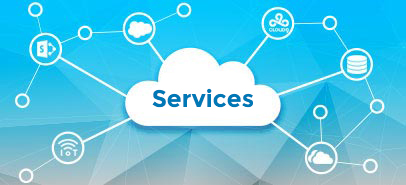
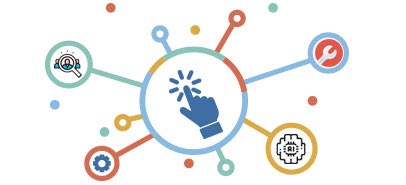




 It’s important to know ‘data governance vs data strategy’. A data strategy is about how you’ll use data to meet your goals. It’s about the “what” and “why.” Data governance is about how to manage data well. It’s about the “how” and “who.”
It’s important to know ‘data governance vs data strategy’. A data strategy is about how you’ll use data to meet your goals. It’s about the “what” and “why.” Data governance is about how to manage data well. It’s about the “how” and “who.” A ‘data governance framework’ helps you set up your strategy. It’s a set of rules for managing your data.
A ‘data governance framework’ helps you set up your strategy. It’s a set of rules for managing your data. Data governance strategies’ aren’t one-size-fits-all. You need to know where you are now to find the right level. You need to determine the right level of data governance.
Data governance strategies’ aren’t one-size-fits-all. You need to know where you are now to find the right level. You need to determine the right level of data governance. Want your ‘data governance initiatives’ to work well? Keep these tips in mind:
Want your ‘data governance initiatives’ to work well? Keep these tips in mind:

